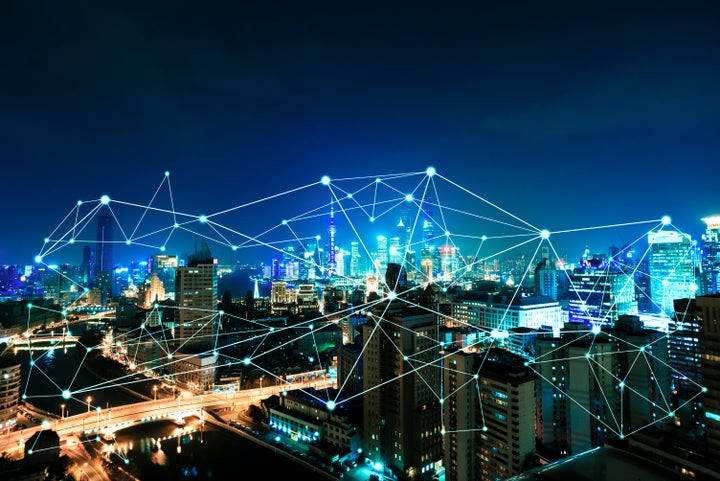
Humans have been living in cities for thousands of years. Yet, while medieval city walls might have fallen to be replaced by roads and bridges connecting our modern metropolises, the essence of the city has remained unchanged. As technology has progressed, we have refined and built up these cities somewhat, but what’s the next step?
Many functions a city needs to perform, and the challenges it faces, are similar to those of an organism. Unfortunately, our cities are currently far less sophisticated. Compare, for example, the transport of goods between city locations, and waste collection and disposal by garbage services, to the brilliance of the circulatory system, simultaneously delivering nutrients and removing toxins where needed.
Or the nervous system, which lets us know what condition different parts of the body are in, providing complete awareness and instant feedback. Compare that to the laborious task of physically patrolling and inspecting city streets, looking for evidence of damage and reporting issues.
So what’s been holding us back? Cities are the way they are because we’ve been working within the confines of the physical world. Macroscopic objects are heavy and don’t move themselves. Light waves can’t go through walls, and the size of a city means it’s not easy to know what’s going on in every part at every moment. We don’t have access to information the way the human nervous system does.
However, this is about to change, and at a staggering pace. Smart cities have the potential to fundamentally reinvent the very ways in which humans operate and interact.
This is because the digital world isn’t constrained by the same laws as the physical one. Virtual objects can be created and destroyed in an instant, moved from point A to point B at will. Smart cities represent the mixing of the digital and the physical. Smart cities have digital sensors woven into their fabric – digital streetlamps, bins, even pavements. And these digital sensors are internet connected and exchanging data.
Imagine the digital footprint of a smart city – the internet-connected presence of every smart car, house, person, street lamp, road. This digital city is being built as you are reading this article, floating over the world of tarmac and litter, with thousands of devices constantly exchanging data about the world around them. This connectedness means that our smart cities can operate a lot more like organisms.
Take the example of security. Critical infrastructure can be damaged, or malfunction. Power plants can overheat. Bridges can collapse. How do you detect the early signs of an emerging threat and stop it before it has caused damage? Particularly those you can’t predict or anticipate.
Living organisms have evolved over billions of years to meet this challenge. Our immune systems face new threats every day, but they have an innate sense of what is ‘self’ and what is ‘other’. When a pathogen gets in, the immune system not only instantly spots the foreign presence, but autonomously fights off infection to restore health.
With fundamental advances in AI technology, smart cities can have their own digital immune systems that fight threats.
Imagine roadworks and congestion resulting in an accident involving a heavy goods vehicle, which ends up swerving off the road and ploughing into the arches of a bridge. This impact cracks a sewage pipe running underground next to the road, which begins leaking, and unfortunately contaminates the water supply. Unsafe levels of toxins are now in the drinking water, and ultimately causes a significant number of the population in the area to fall ill. These kinds of scenarios are extremely hard to plan for – you can’t predict that order of events.
But a smart city can record each of these changes with its sensors, and using machine learning algorithms, patterns can be spotted easily which add up to a significant deviation from normal. We don’t need to have predicted this in advance – once we have access to the data, the digital immune system can correlate the weak indicators to detect the threat as it is occurring, giving humans a chance to address the issue before damage is done.
Cyber space is in many ways a blank canvas – we get to write the rules from scratch. It is our job to ensure the cyber world is integrated into city infrastructures in a responsible and safe way without opening us up to new cyber-threats. When we start connecting our cities to the internet, our lives are going to change in ways that were never possible when we were only playing with cement and mortar. Yes, we need to be conscious of the dangers, but there will be huge rewards to balance the risks with the benefits.
